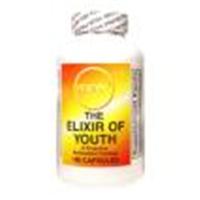La Jolla: Mice cooled by half a degree below normal had a life expectancy 20% longer, or the equivalent of 7-8 additional human years.
The result implies that chilling human blood could also stretch out our lifespan, if a safe way can be found to do it. “Maybe from the point of view of survival, 37 is not exactly optimal,” says lead researcher Bruno Conti of the Scripps Research Institute in La Jolla, California.
It has long been held that the ideal human body temperature is 37 degrees Celsius. But this new study suggests that 36.5 °C might be even better.
Researchers have known for decades that a diet containing a third less calories than usual extends the lifetime of mice and other mammals by up to 40% and drops their body temperature by half a degree or more.
It was not known whether the cooler temperature helps stave off ageing or is simply a by-product of the low-calorie diet. And this is virtually impossible to test, because mammals maintain the same temperature regardless of the surrounding clime.
Conti’s team managed to cool down mice using genetic engineering. They used a gene called uncoupling protein 2, which diverts the cells’ mitochondria from their usual task of making chemical energy, and instead prompts them to release energy as heat.
They inserted this gene into a group of brain cells in the animals’ hypothalamus and near to the region that senses and controls body temperature, much like a thermostat. The gene effectively heated up the thermostat and, as a result, tricked the rest of the body into cooling down by 0.3 to 0.5 °C.
Cooled female mice had a life expectancy 20% longer and males 12% longer. The mice appeared to live typically healthy lives up to the point that they died; they were not simply stretching out their frail, elderly days. The results are published in Science1.
The study suggests that the lower body temperature accounts for some of the age-fighting effects of calorie restriction. It may be that the cooler temperature slows down metabolism and the manufacture of by-products such as free radicals that damage and age cells.
“You don’t necessarily have to eat less to have the beneficial effects,” Conti says.
“Not many people are willing to spend their lives starving themselves,” says Cliff Saper who studies sleep and feeding at Harvard Medical School in Boston, Massachusetts. If, on the other hand, researchers can find a way to carry out the same brain-warming gene therapy in people, “You could get people to sign up for that.”
Nobody knows why 37 °C is, on average, the temperature that evolution favoured for humans and most other mammals, but it is generally assumed to be optimal for biochemical reactions.
So if 36.5 °C helps animals to live longer, why wasn’t it selected for through evolution? The cooler temperature probably has no selective advantage because it stretches out life after reproduction, and does not affect the ability of animals to have children and pass on their genes. And although Conti’s mice appeared normal, it’s possible that the lower body temperature actually causes subtle health problems.
“If there is a selective advantage to being cooler, evolution would have pushed us in that direction,” Saper says.
Conti suspects that some people may have small differences in their core body temperature that might alter their rate of aging, perhaps making some longer-living than others. This would only be possible to test using small, swallowed or implanted thermometers such as those carried by the experimental mice.
Read Full Story


